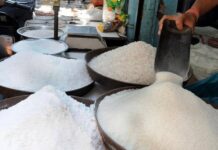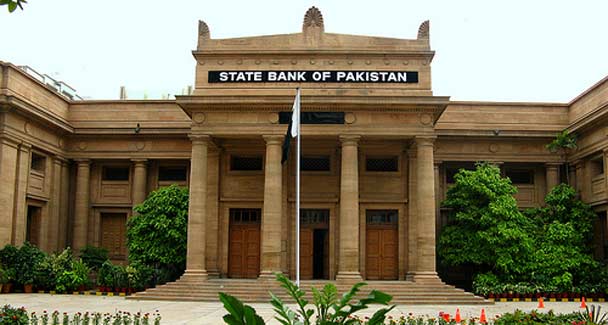KARACHI: The Committee of the State Bank of Pakistan (SBP) on Friday kept the policy rates or discount rates unchanged at 5.75 per cent.
The latest information reveals that economic activity is strong as corroborated by broad-based pick up in industrial output, gains in factors supporting the production of major crops, and growth in private sector credit. This implies that the prospects of achieving 6.0 per cent target of real GDP growth continue to be strong.
Model-based projections for inflation and survey-based measures of inflation expectations show that in 2017-18 overall inflation is expected to remain well below the target of 6.0 per cent. On the fiscal front, healthy growth in tax revenue collection by FBR during Q1-FY18, 22.0 per cent compared to the modest 4.5 per cent during Q1-FY17, is a welcome development. Near-term balance-of-payments challenges continue to persist. However, visible improvements in export growth, a notable increase in foreign direct investments and expected other financial inflows will help contain these pressures.
A review of latest developments in the real sector shows that during Q1-FY18 LSM growth has surpassed its earlier expectations as it has been recorded at 8.4 per cent compared to 1.8 per cent in the corresponding period of FY17. This is explained by improved security conditions and power supply, the transformation of fixed investment into enhancements of productive capacity on the ground, low inflation and stable interest rates.
Further support comes from the continuation of CPEC projects. Barring any extreme seasonal events, the agriculture sector is expected to perform better for the second consecutive year. This is explained by an increase in both cultivated area and fertilizer off-take during the Kharif season, the on-going trend of investment in mechanisation, a higher uptick in agricultural credit and unchanged support price for wheat at the time of its sowing. Accordingly, demand for services is also expected to rise in FY18 given its inter-connectivity with the other two sectors. Taking all the evidence together, real GDP growth is expected to meet its target level of FY18.
Turning to inflation, CPI inflation averaged 3.5 per cent during Jul-Oct FY18, well below the annual inflation target. Higher international oil prices along with pass-through to domestic petroleum prices and the imposition of a regulatory duty on non-essential import items are expected to increase inflation in the coming months. However, while taking into account these effects, inflation is still expected to fall inside the range of 4.5-5.5 per cent projected at the start of FY18.
Indeed, supply-side dynamics, both for food and non-food items, are improving given the gains in agricultural yields and investment in manufacturing. The current growth momentum is being translated into upward pressure in the services component of the CPI basket. Consequently, NFNE measure of core inflation remains relatively high although stable around its current level of 5.3 per cent (YoY) since November FY17.
An important development in the monetary sector is a visible change in the pattern of government borrowing for budgetary financing. Instead of relying heavily on Central Bank financing like last year, the government is securing funds both from SBP and scheduled banks. Alongside active liquidity management by the Central Bank kept the overnight repo rate close to the policy rate and is supporting the availability of credit. Indeed, the stock of credit to the private sector grew on YoY basis by Rs 814.9 billion in October FY18 (a growth of 18.5 per cent) as compared to Rs 436.4 billion (11.0 per cent growth) in the corresponding period last year. Looking into the break-up of this credit expansion, the already buoyant growth in fixed investment gained further traction at a slightly higher level relative to FY17, while both working capital loans and consumer financing showed encouraging trends. These developments are further supported by the improvement in capacity utilisation of major sectors which indicates growing demand.
The current account deficit widened to $ 5.0 billion during Jul-Oct FY18 as compared to $ 2.3 billion during the corresponding period in FY17. Delving deeper, Pakistan’s exports have seen an improvement during Jul-Oct FY18, growing at 11.3 per cent as compared to the decline of 3.1 per cent in the comparable period last year. Similarly, remittances recorded a modest increase of 2.3 per cent during Jul-Oct FY18. Nonetheless, the impact of these positive developments on the overall current account was more than offset by growth in imports on account of rising domestic demand for consumption as well as investment and due to a recent rise in international oil prices. However, the introduction of regulatory duties is expected to help curb some growth in imports during the coming months.
Finally, the financial account perspective shows that FDI inflows have risen, reaching $ 940 million by the end of October FY18 as compared to $ 539 million during the same period last year, indicating improving sentiments regarding the economy. Despite this positive development, SBP’s foreign exchange reserves stand at $ 13.5 billion on November 17, 2017, down from $ 16.1 billion at end-June 2017. Going forward, progress on CPEC related projects and other official proceeds will be instrumental in managing the overall balance-of-payments deficit.
























